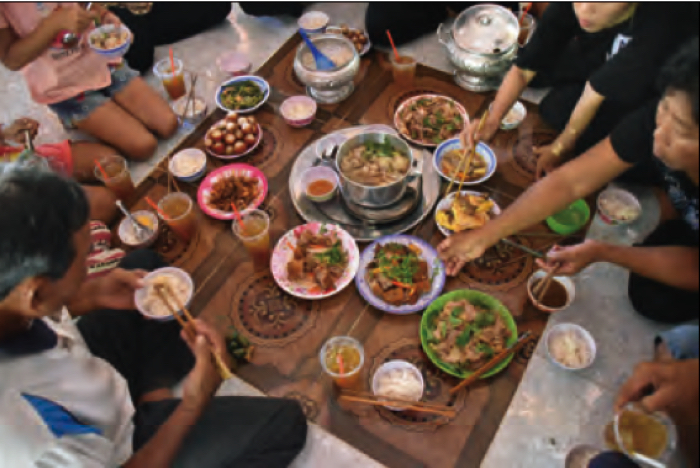- Project Leader : Horie Mio (Gifu University, Faculty of Regional Studies)
- Collaborators : Hayami Yoko (Kyoto University, Center for Southeast Asian Studies)
- : Sugie Ai (Nagoya University, Institute for Advanced Research)
- : Yoshizawa Asuna (Kyoto University, Graduate School of Asian and African Area Studies)
- : Shimojo Hisashi (Kobe University, Graduate School of Intercultural Studies)
- : Jie Huang (Nagoya University, Institute for Advanced Research)
Outline of Research
Numerous languages, religions, and cultures have historically coexisted in Southeast Asia and its adjacent regions. At the same time, conflicts have surfaced and intensified due to the imposition and integration of nation-states, and political and economic changes. This joint research project brings together scholars of geography, anthropology, and area studies to investigate the basis of co-existence and symbiotic relationships among peoples in Southeast Asia and its adjacent regions by elaborating the political, economic, cultural, and quotidian contexts in which they live. We also examine the possibility of recreating such relationships when they have been disrupted. Through a discussion of the body and physicality, we aim to refine the concept of co-existence.
Description
This joint research investigates the the co-existential relationships in Southeast Asia and its adjacent regions, and opportunities for their emergence and/or re-emergence. In so doing, we aim to refine the concept of co-existence. We define co-existence broadly as a state in which different groups mutually do not deny the lives of the other while maintaining an orientation toward co-existence with the other. The term co-existential relationship is used to describe such a state of affairs in which there are sometimes conflicts and tensions, but orientation toward the other can still be seen.
The uniqueness and significance of this research lies in its focus on the body when thinking about the wide range of co-existential relationships The body has been discussed as something open to others and divided at both the conceptual and material levels. People are dependent on the bodies of others, and the vulnerability of the body evokes co-suffering and empathy. Also, given that the body is composed of fluid substances such as blood or milk, and we share and exchange them, it becomes difficult to separate “us” from “others”. This inseparability between the self and others dismantles the modern Western view of the individual, which is assumed by normative co-existence theories and upon which universal human rights principles are based. Using Southeast Asia and its neighboring regions as its field, the research therefore seeks to re-conceptualize coexistence through discussions of the body and vulnerability.
Another significance of this joint research is that it reconsiders the existing political, economic, and theoretical scale of the region and its communities through the lens of “geographical scale” (Smith 2000). Geographical scale describes and analyzes the spatial extent of a phenomenon, as opposed to methodological scale, which is operationally set by researchers and others. Rather than assuming particular boundaries, this study will capture the relationships that appear in boundary areas while disturbing the boundaries. Through this perspective, we will 1) clarify the nature of co-existence and the opportunities for its manifestation, and 2) reconsider the mobility of migrants and refugees and the politics surrounding it in societies that experience conflict at a geographical scale.
The expected outcome of this joint research is to present a concept of co-existence that is more rooted in people’s daily lives and physical senses. We expect that this study will facilitate a reconsideration of the Japanese concept of kyosei (co-existence), which currently disregards the institutionalization and history of unequal treatment of foreigners, and revive the concept from a more bottom-up and context-dependent perspective.
 A Maranao teacher teaching about Hadith to Balik-Islam women, Philippine |
 Lay people eat together after the ritual of the sīla day at Theravada Buddhist Temple, Mekong Delta, Vietnam |
